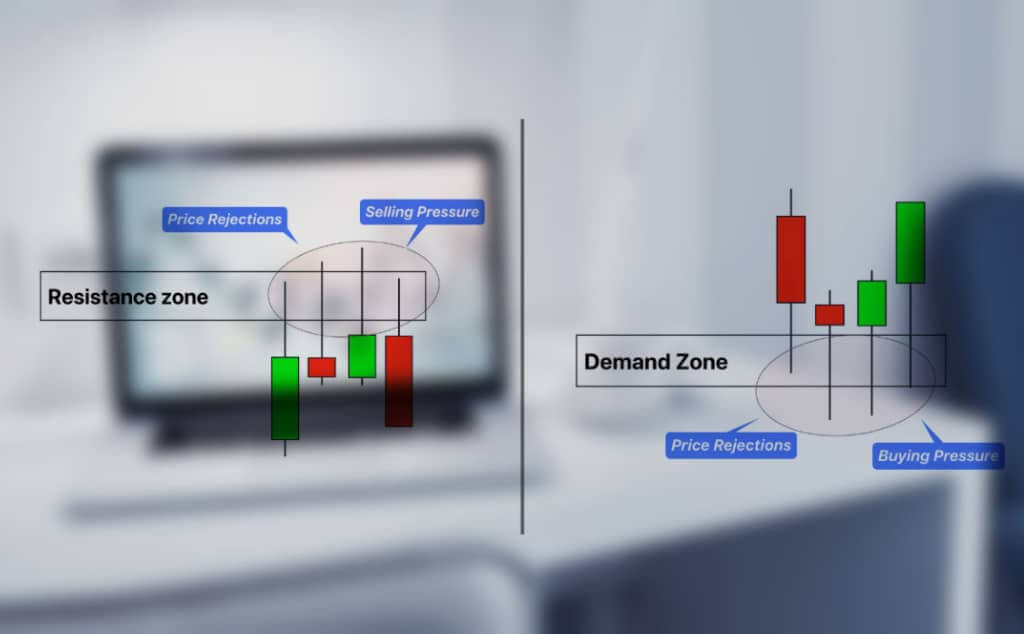
Rejection Candle – Trading Strategy Explained By a PRO
Do you also consider yourself a serious and motivated trader who wants to perfect the rejection candle trading strategy as a true professional? If so, then you’re familiar with the fact that one of the sure ways for such a thing is to embark on an adventure called – price action strategy.
Before we get to it, this strategy can be applied in swing trading, CFD trading, and many other situations. Generally speaking, price action trading strategies are a fantastic way for newbies to effectively learn from professional peers by going after price action trends once they get fully noticeable.
A rejection candlestick refers to the reversal from either higher or lower prices. Usually, you can spot it with Japanese candlestick charts showing that a global market has gone in one direction but immediately declined.
So, what is the strategy regarding rejection candles all about? What is this strategy all about? Let’s get all the basics, shall we?
What is the Candlestick Rejection Strategy in general?

The Candlestick Rejection Strategy is a swing trading technique that relies solely on price action. It utilizes the concept of price rejection or candlestick rejection patterns to nullify counter-trend momentum and facilitate trade continuation.
Implementing the Candlestick Rejection Strategy in swing or CFD trading enables traders to identify points where market prices temporarily pause during retracements before resuming the prevailing dominant trend. This approach capitalizes on the buying or selling opportunities presented in financial markets, leveraging the dynamics of price rejections to optimize trade outcomes.
What can traders expect from it?
By incorporating this strategy, traders can effectively navigate the complexities of financial derivatives, leveraging candlestick rejection patterns to make informed decisions regarding entry and exit points.
This approach takes advantage of price movements and enables traders to enter trades at favorable buy prices, maximizing the potential for profits while managing potential losses.
What does the rejection candlestick look like and is about?

As mentioned above, a rejection candlestick, or a rejection candle, is the chart that communicates the reversal from higher or lower prices. You can spot it looking like some of the two following candlesticks:
- The bullish hammer reversal
- The shooting star bearish reversal pattern.
According to experts, the rejection candle pattern resembles a pin bar pattern with a long wick that opposes a relatively short body. However, knowing how to differentiate this particular pattern from the same Japanese one is crucial. Their main difference is where they will emerge on the price chart.
Where should it happen? Either on high or low in the market. Remember that the rejection candle needs to happen at a useful area on the chart.
What should price action traders note here?
The most common mistake while trading CFDs on the trading platform, in addition to wrong trading decisions, is trading each candlestick pattern on the spot.
Examining any price chart at first glance reveals numerous instances of “failed” candlestick patterns. The underlying point to note is that the effectiveness of a candlestick reversal pattern is consistent solely at significant price levels.
This leads us to ponder the following question:
What constitutes an “important” price level?

The following list emphasizes six specific areas on the chart where rejections should occur. It is crucial to ensure that the rejection you are contemplating as a trigger to initiate a trade occurs at one designated area on the chart. By doing so, you’re able to enhance the overall likelihood of achieving success.
1. Round numbers
2. Previous swing highs and lows
3. Trendlines
4. Well-known moving averages (such as the 50 DMA or 200 DMA)
5. Fibonacci retracement levels
6. The conclusion of an extensively prolonged trend.
While there are other vital factors to consider, such as pivot points, it is advisable to adhere to the principle of KISS (keep it simple foolish!) by focusing on the earlier strategy. This approach allows for a clearer understanding of opening prices, the opening and closing of trades, and the potential for profits and losses.
Rejection Candle: The Bottom Line
The rejection candle strategy in CFD trading utilizes candlestick patterns to identify potential market reversals and continuation trends. By effectively recognizing and utilizing these rejection patterns, traders can make informed decisions for buying or selling CFDs, increasing their chances of profitable trades.




